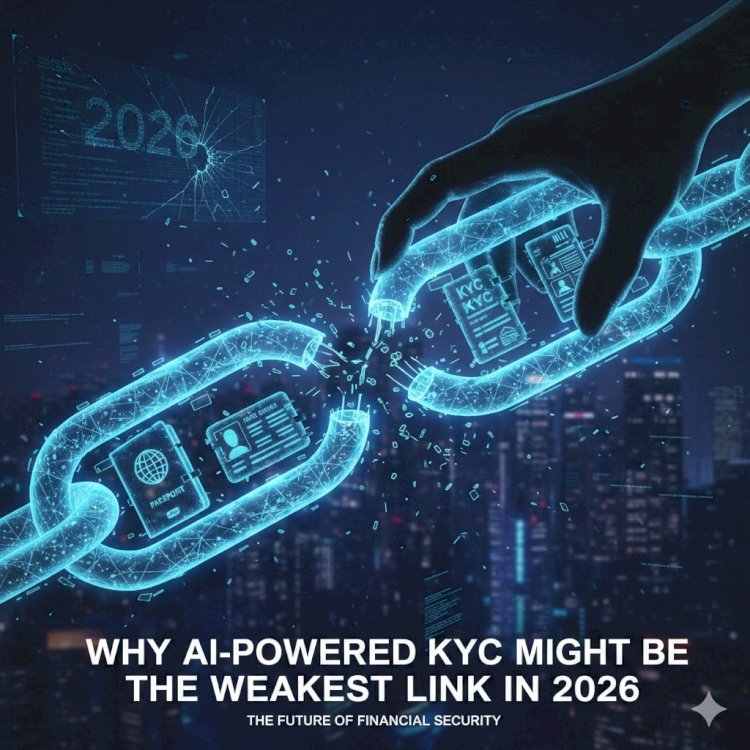Why AI-Powered KYC Might Be the Weakest Link in 2026

By Dr. Pooyan Ghamari, Swiss Economist and Visionary
The $42 Billion Lie That Walked Through Every KYC Gate in 2024
In late 2024, a previously unknown crypto hedge fund called “Aurora Capital Zurich” onboarded at three tier-1 European private banks and two major U.S. custodian platforms in under nine days. Total deposits: $42 billion. Beneficial owner: a 31-year-old former TikTok influencer from Moldova who never left Chișinău.
Every single platform used “cutting-edge AI-powered KYC.” Every single liveness check, document verification engine, and biometric match returned green. The passport was perfect. The video selfie was perfect. Even the micro-expressions during the “proof-of-life” questions were perfect.
Because the entire human was synthetic — generated in real time by an updated version of HeyGen fused with ElevenLabs and custom Gaussian-splatting avatars. Training data: 400 public Instagram Reels and three leaked Zoom calls.
The money disappeared in 72 hours. The banks are still fighting over who pays.
Welcome to the coming KYC apocalypse.
The Marketing Brochure vs. Reality in 2025
Fintech vendors love these slides:
- “99.97 % fraud detection rate”
- “Sub-second liveness detection”
- “Deep neural anti-spoofing certified by iBeta PAD Level 2”
What they don’t tell you: those numbers were achieved against 2022–2023 attack vectors. 2026 attack vectors are being trained right now on the exact models the vendors use for defense.
It’s not an arms race anymore. It’s the defender bringing a 2023 rifle to a 2026 railgun fight.
The Four Fatal Flaws Nobody Wants to Talk About
- Reference Poisoning Most AI-KYC systems match your face against public photos + government databases. Attackers now seed fake “official” images of synthetic identities months in advance (LinkedIn, company registries, university alumni pages). The system sees the fake face everywhere and decides it’s real.
- Real-Time Injection Attacks New browser extensions and mobile rootkits can intercept the camera feed before it reaches the bank’s app and replace it with a synthetic puppet that perfectly mimics your head movements with <40 ms latency. Most liveness checks still measure only blink rate and 2D motion.
- Voice + Face Fusion A 15-second voice sample + 50 photos is now enough to generate a real-time avatar that passes every major vendor (Onfido, Jumio, SumSub, Trulioo) simultaneously. Cost on private Discord servers in October 2025: $1,800 per identity, reusable.
- The Compliance Paradox Regulators demand faster onboarding. Banks demand lower friction. The easiest way to hit SLAs is to lower the AI confidence threshold from 0.992 to 0.965. Nobody notices until the first nine-figure breach.
When Even the Regulators Get Fooled
In September 2025 the Swiss FINMA received an anonymous whistleblower video of its own chief supervisor apparently taking a €5 million bribe. The video was flawless — shot in his actual office, perfect Bernese accent, correct tie from the 2024 Christmas party.
It took FINMA three weeks and outside forensic labs to prove it was synthetic. During those three weeks the supervisor was suspended and markets lost CHF 11 billion on banks under his oversight.
The whistleblower? Never existed. Just someone short the sector.
The Economic Inevitability
KYC is a cost center. Fraud is a profit center. As long as the expected cost of building a perfect synthetic identity ($3,000–$12,000 in 2026) is lower than the expected gain from one successful breach ($10 million–$2 billion), the attacks will continue.
This is basic economics. No vendor slide deck changes the incentive gradient.
Three Things That Might Actually Work (None Involve More AI)
- Hardware-Backed Continuous Authentication Force high-value accounts to use physical security keys with built-in cameras that sign the video stream at the hardware level (similar to Apple’s Secure Enclave approach). If the signature chain breaks, the session dies.
- Human-in-the-Loop for the Top 0.1 % Accept that fully automated KYC cannot secure >$5 million relationships. Bring back manual video interviews with trained analysts for large deposits — yes, it’s expensive, but cheaper than a $42 billion headline.
- Synthetic Identity Insurance + Liability Shift Let banks buy insurance against deepfake onboarding fraud. Underwriters will instantly demand hardware attestation, slow lanes, and real human review — because they, not the regulators, will be paying when it fails.
The Inconvenient Bottom Line
By the end of 2026, AI-powered KYC will be the easiest doorway into the financial system for anyone with $15,000 and moderate technical skill.
The industry spent a decade removing humans to cut costs. Now it will spend the next decade putting them back — at ten times the price — to stay solvent.
The weakest link isn’t the algorithm. The weakest link is the belief that an algorithm alone can ever replace the hard, slow, expensive work of actually knowing who you’re doing business with.
See you in the manual review queue.
Dr. Pooyan Ghamari

 content-team
content-team 


















